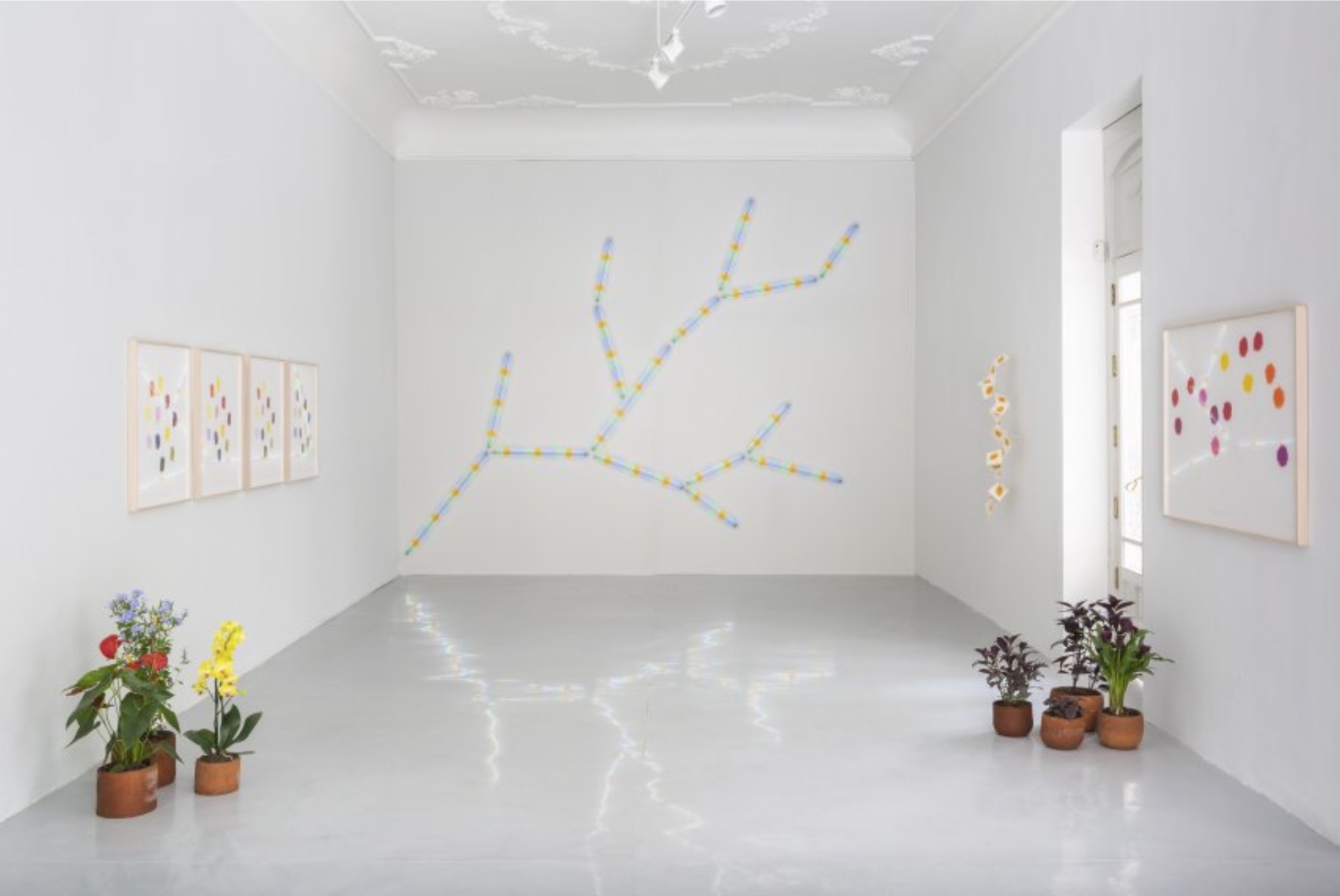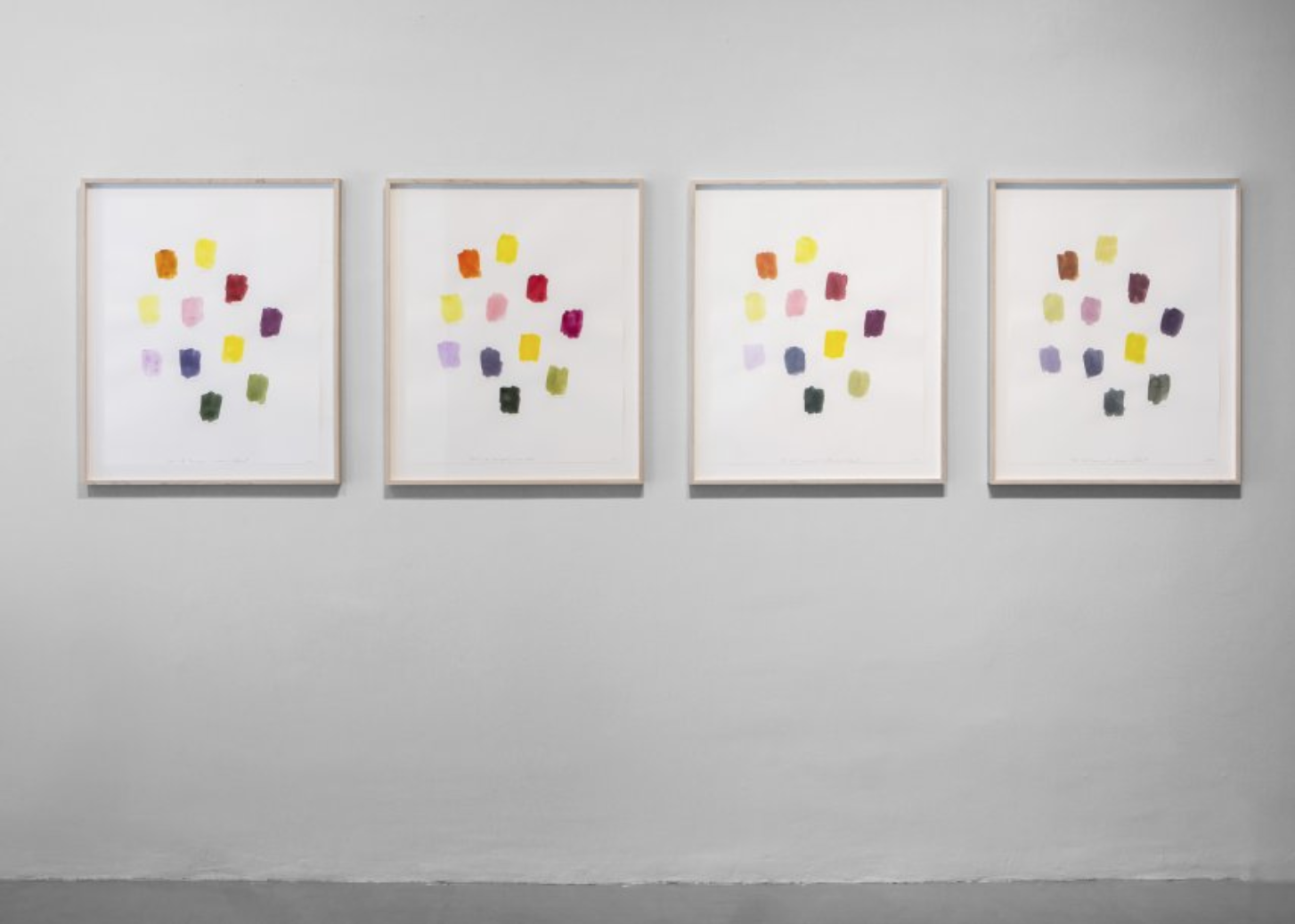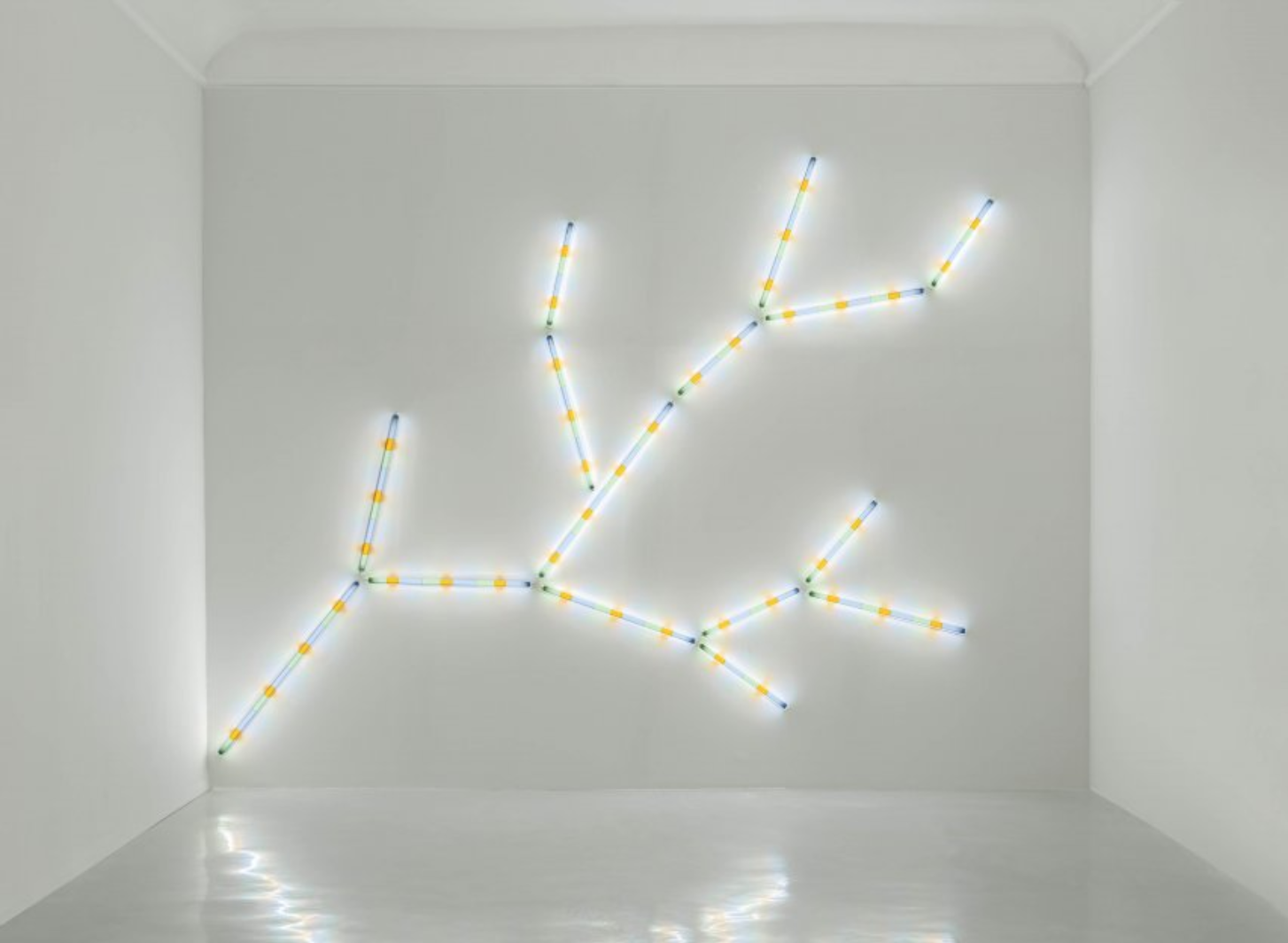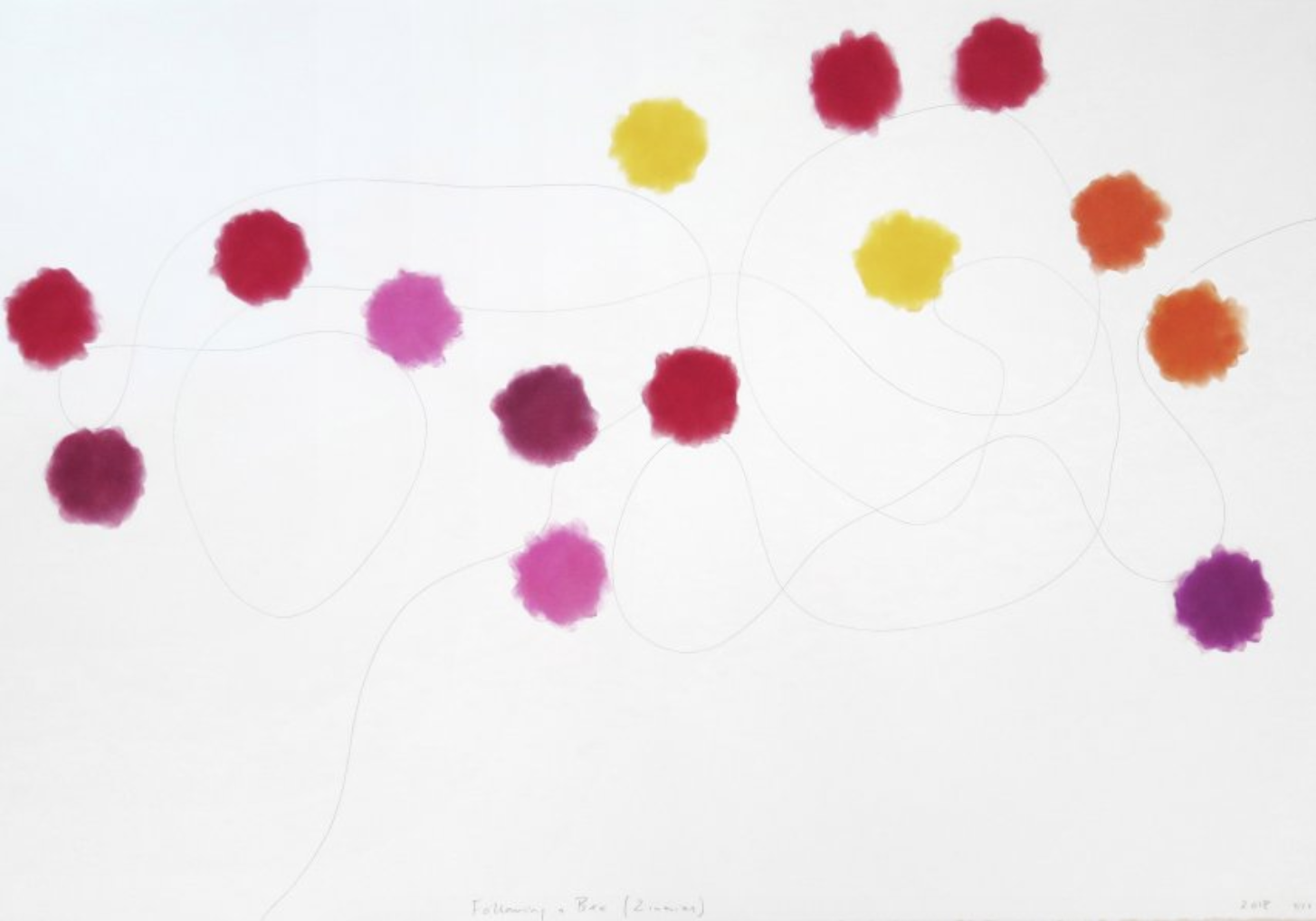
Review
A garden located inside a white cube | Spencer Finch, Botanica
by Nicolás García Barraza
Recreating a specific time and place through colors
Reading time
4 min
After opening a space in Mexico in 2018, Nordenhake now presents Spencer Finch’s first exhibition in this country. The conceptual focus of Botánica is the complex relation between world and existence: it is a meticulous study seeking to understand the artist’s surroundings, drawing on the link between memory and sensory perception. This set of pieces picks up on Finch’s extensive research into the relationship between color and light, something that has characterized his work from the very beginning.
Throughout Finch’s work we can observe his fascination with natural phenomena (particularly color and light), something that demands effort—both psychological and linguistic—in order to be experienced: for example, Finch based his piece 366 (Emily Dickinson’s Miraculous Year) on the year 1862, during which Emily Dickinson wrote 366 poems in 365 days. This sculpture consists of 366 candles arranged in a linear sequence, each one matching a color mentioned in a corresponding poem and each one burning for a duration of 24 days. For Sunset (St Louis, July 31, 2008) Finch used solar energy to make ice cream in colors derived from a watercolor study he conducted of the sunset in St. Louis.
Upon entering the gallery, visitors finds themselves in the middle of a garden located inside a white cube, surrounded by plants, pots, lights, and vibrant colors (green, blue, orange). Perhaps Finch’s intention is precisely that: to recreate a specific time and place through colors. In this way, the artist introduces the public to a controlled simulation of his garden, in which colors and their different shades emanate an absorbing and captivating power.
Subsequently, viewers find themselves carrying out meticulous exercises in contemplation, noting the path of a leaf falling from a tree, noting the slide downwards of a peony’s two petals (making palpable the passage of time), as well as the fusion of colors in the plants decorating the space: what constitutes an allusion to a color-game imagined by Wittgenstein in his Remarks on Colour.
Often Finch appeals to other artists and their works, feeling attracted to the idea of reinterpreting what others have created. In the past, as in Botánica, he has worked with the ideas and creations of such historic figures as Ludwig Wittgenstein, Claude Monet, Masaoka Shiki, and Federico García Lorca.

In April 1889, Claude Monet sent a letter[1] to Gustave Geffroy saying, “I am following Nature without being able to grasp her.”* The piece Still Life (bouquet), morning effect, noon effect, afternoon effect, evening effect, inspired by Monet’s work, is an attempt by Finch to assimilate and examine the place where he finds himself: his garden. The artist collected eleven flowers, which he then studied carefully, seeking to capture the effects on them of light and color throughout the course of the day; the results are four watercolor drawings documenting the flowers’ changes in hue.

The installation Shadow of Orange Tree (After Lorca) was specially produced for the gallery space. Through the use of florescent lights and color diffusers, Finch recreated the shadow of an orange tree in the garden of García Lorca’s childhood home. This piece is inspired by García Lorca’s poem “Song of the Barren Orange Tree” (Canción del naranjo seco) and again takes up Wittgenstein’s work on color and language. The installation not only seeks to recreate with precision the tree’s shadow and colors; it also seeks to elicit a psychological experience in the viewer. It is a static and precise recreation that establishes a relationship between technology, science, and nature.

Finally in Following a Bee (Zinnias), the artist continues to explore his garden, focusing his attention on a bee’s journey through its flowers. The observation exercise was so meticulous that Finch waited approximately two hours for the bee to move on from one flower and to exit the garden. The resulting drawing portrays the color of the flowers where the bee stopped to feed itself, as well as a line marking the insect’s passage.
Botánica brings together a set of works allowing us to reflect on the spaces we share, thus yielding an interpretation of our surroundings beyond what we notice with the naked eye: that weight of color, that light in our psyche we typically neglect in our day-to-day lives. In the words of Susan Cross, “Finch is continually celebrating, and grappling with, the beauty and enigmas of light and color. His mix of science and poetry is fitting for a subject that is equally tied to science and art.” **
* Letters of the Great Artists - Richard Friedenthal
** The Brain Is Wider Than The Sky – Susan Cross
Published on September 23 2019